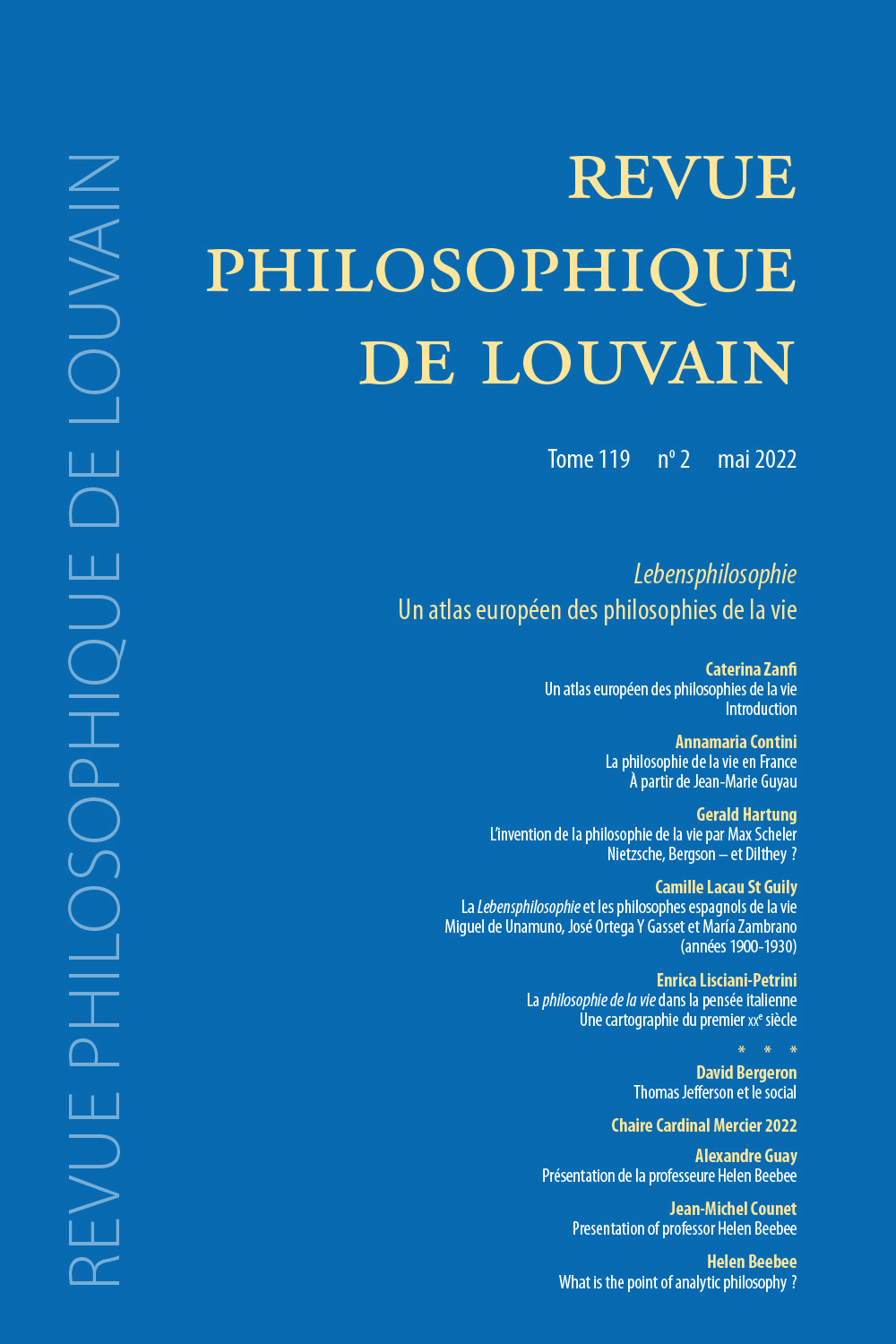 previous article in this issue previous article in this issue | next article in this issue  |

Preview first page |
Document Details : Title: Andreas Speiser (1885-1978) et Herman Weyl (1885-1955), scientifiques, historiens et philosophes des sciences Author(s): RADELET-DE GRAVE, Patricia Journal: Revue Philosophique de Louvain Volume: 94 Issue: 3 Date: août 1996 Pages: 502-535 DOI: 10.2143/RPL.94.3.541800 Abstract : Authoritative assessments of the Scientific Revolution suggest that the question of the living was not central to the new mechanistic natural philosophy which developed in the Seventeenth Century. But fostering adequate models of the living seemed of foremost importance for modern philosophers who questioned the specificity of organisms in nature and investigated the means of analyzing vital phenomena. The first models that framed up within modern science took their inspiration in neo-Platonist or neo-Aristotelian traditions, while they parted with the Galenist orthodoxy. The author examines herewith the theoretical conceptions Harvey and Van Helmont would subordinate empirical analyses to. In Harvey’s case, there is no question of denying the importance of so-called experimental arguments, nor, in Van Helmont’s, of challenging the speculative nature of his ontology of psychomorphic vital principles; the aim of the author is rather that of sketching the epistemological profile of those models the protagonists of vital mechanism will have to distance themselves from. The author will trace the relations between philosophy and history of science through the philosophical and historical writings of two scientists: Andreas Speiser and Herman Weyl. Both men, born the same year, were twenty years old when Einstein published his famous articles on relativity and on the quantum of energy. Both pupils of Hilbert who reformulated a great deal of mathematics during that period, they defended their theses in Göttingen at one year of distance. The problems of the mathematical foundations of physics and especially of relativity and quantum mechanics drew them to philosophical reflexions nourished by exemples taken from history, science (especially Weyl) and arts (especially Speiser). The importance of symmetries (or of invariance) for those theories will draw them to look for all forms of symmetry in nature as well as in painting, music, litterature but also in the methods of discovering of Kepler or Euler. |
|


